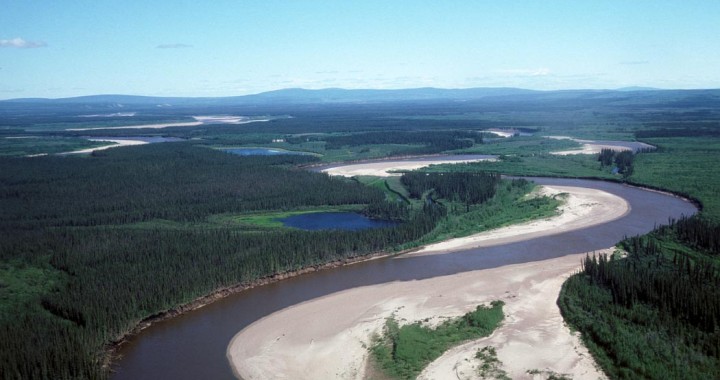Bristol Bay is a very controversial area as government agencies are pitted against each other and environmentalists battle with industrialists. The Pebble Mine will provide over 1000 long-term jobs, increasing Alaska’s mining workforce by almost 25%. So why then are the locals so against this development? What makes salmon so special?
Pacific salmon are keystone species, which means that they play an important role in the survival of other species and are an integral part of the ecosystem. One of their most important functions is the provision of nutrients. Wild salmon develop in the ocean, where they amass 95% of their biomass and then they return to coastal freshwater habitats to spawn (Schindler et al. 2003). This movement connects energy and nutrients from the ocean to lakes and streams. Salmon eggs and carcasses provide nutrients directly through consumption and indirectly to the ecosystem through bacteria. Schindler et al. found that “The decline of salmon numbers throughout much of their southern range in North America has prompted concern that the elimination of this “conveyor belt” of nutrients and energy may fundamentally change the productivity of these coastal freshwater and terrestrial ecosystems, and consequently their ability to support wildlife” (2003). Additionally, salmon act as ecosystem engineers because they dig nests during spawning, which alter the physical shape of streams and disturb algal and insect communities. Finally, salmons impact terrestrial ecosystems as well as riparian. They are food sources for animals such as bears and birds, playing a role in multiple food webs, and their decaying bodies can release nitrogen, calcium, and phosphorous into the ground.
Historically, salmon have been affected by damming of rivers and overfishing and these anthropogenic actions have greatly reduced the abundance of Pacific salmon in Alaska. However, the salmon in Bristol Bay have proven to be very stable; “the entire sockeye salmon stock has demonstrated more temporal stability than any of its component populations have during the last century, despite wide-scale climatic shifts and substantial fishing pressure” (Schindler et al. 2003). Bristol Bay is one of the few remaining pristine ecosystems for salmon in Alaska and opponents to the Pebble Mine realize how important it is to maintain Bristol Bay, for the salmon and the entire surrounding environment.
Source: Schindler D., Scheurell M., Moore J., Gende S., Francis T., Palen, W. (2003). Pactific Salmon and the Ecology of Coastal Ecosystems. Ecological Society of America 1(1): 31-37 http://www.sfu.ca/biology/faculty/jwmoore/publications/Schindler_etal_Frontiers_03.pdf
Image: http://commons.wikimedia.org/wiki/File:Kodiak_Bear_with_salmon,_USFWS_DI-DSC00044.jpg
Featured image: http://en.wikipedia.org/wiki/Black_River_%28Alaska%29


